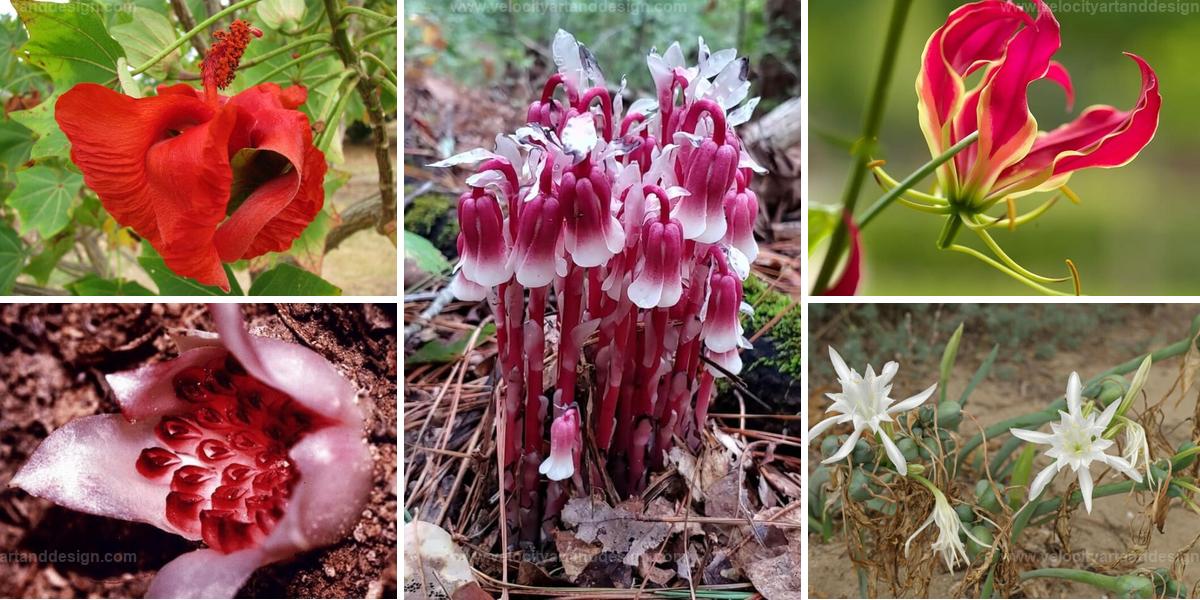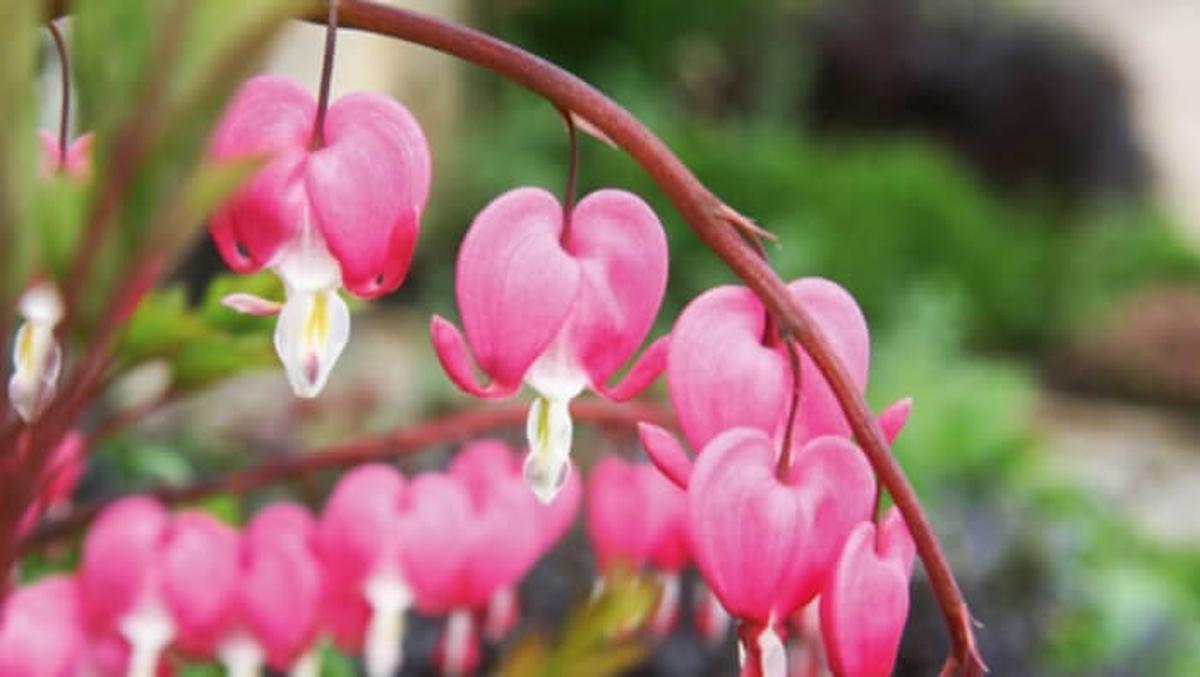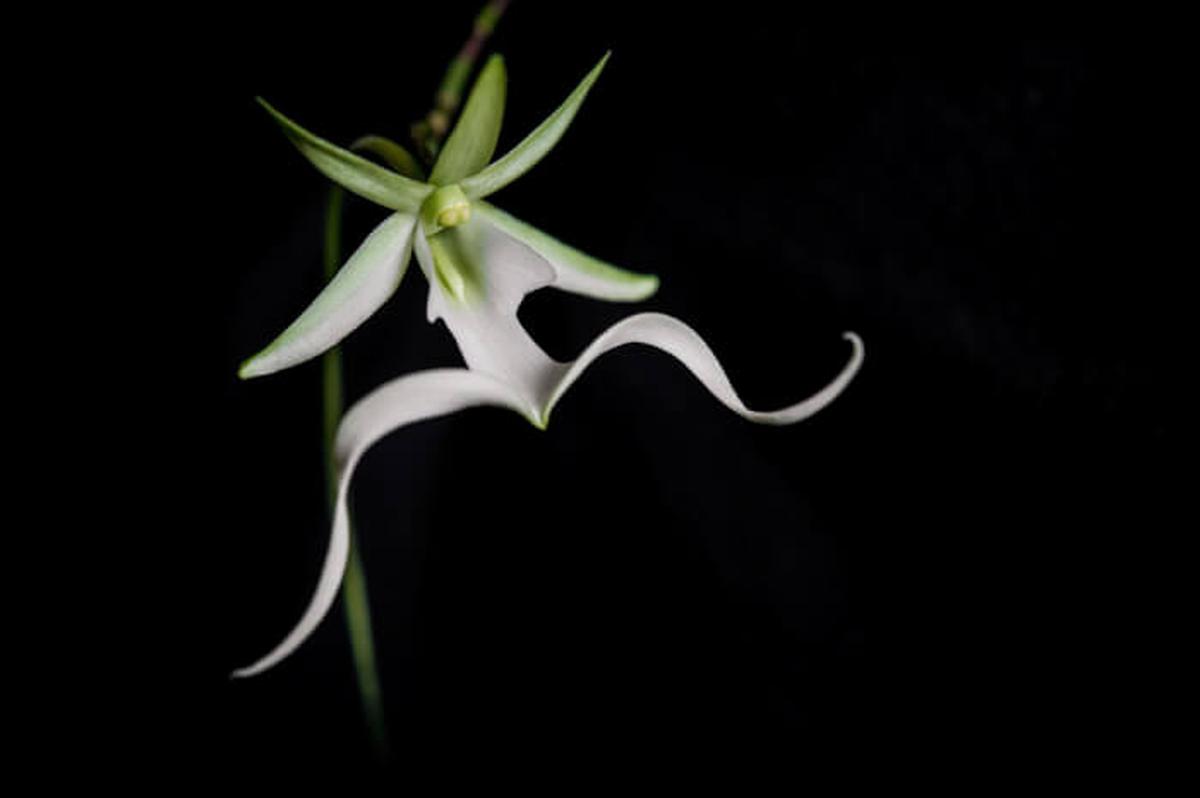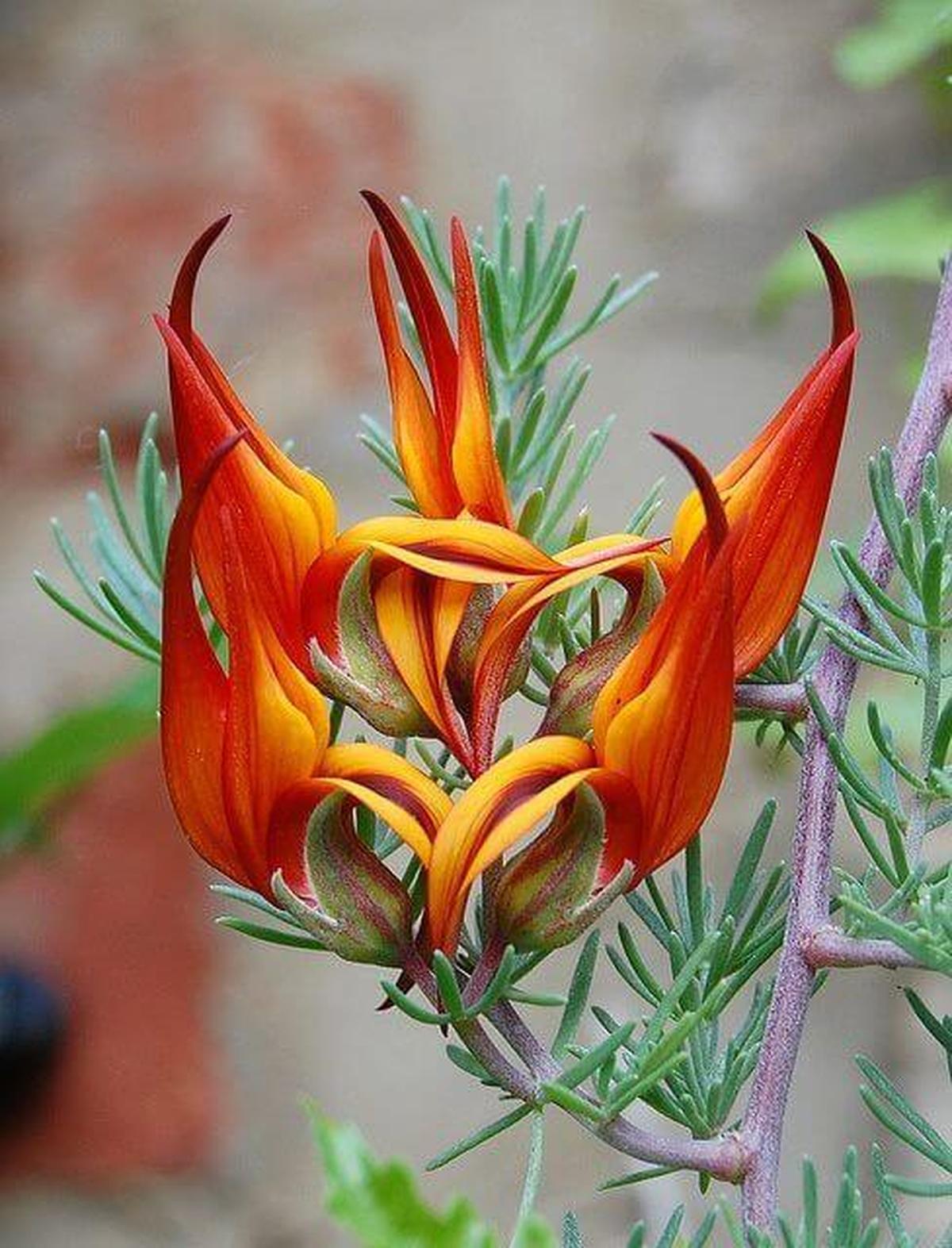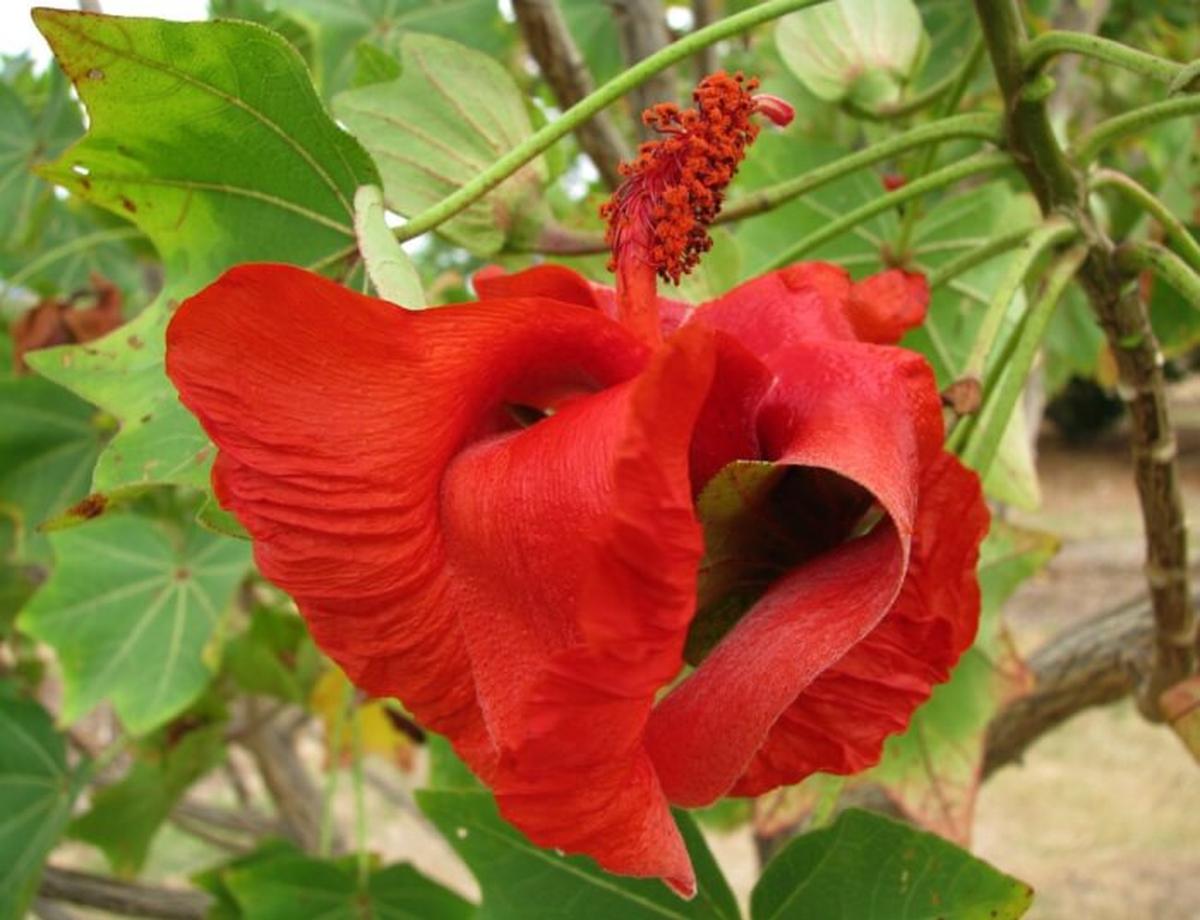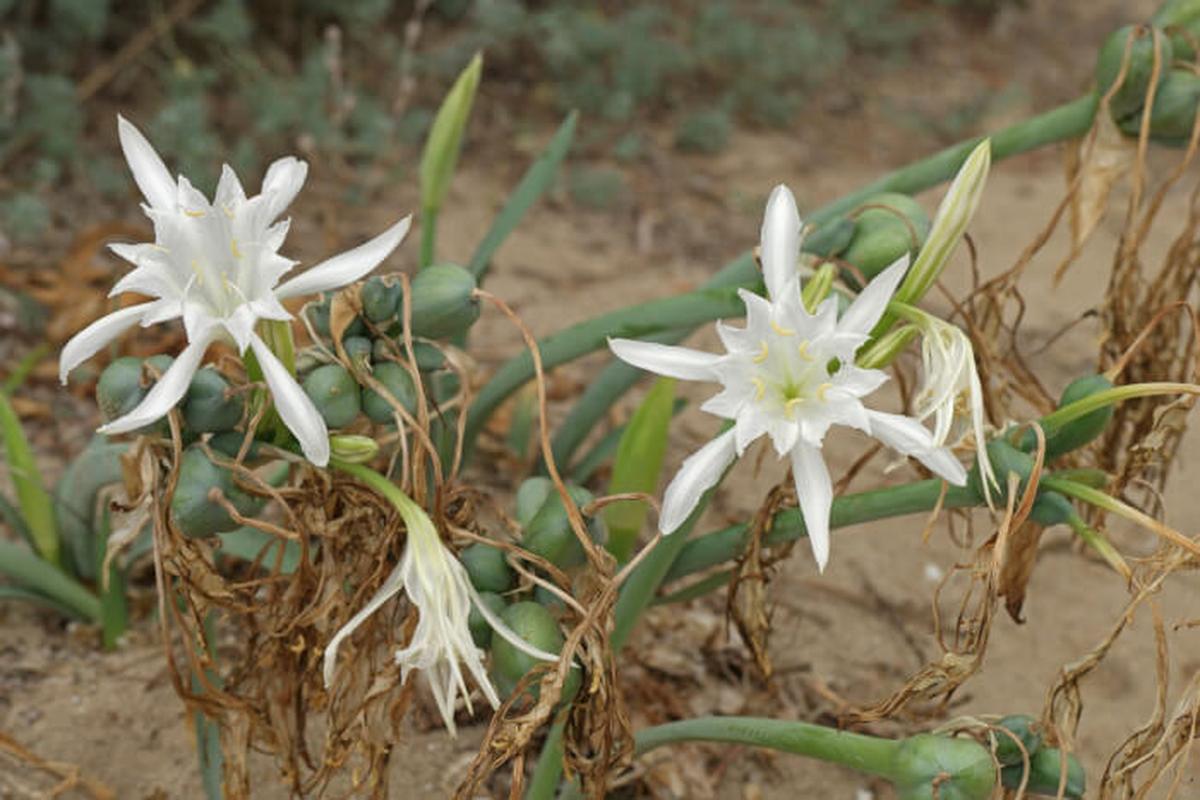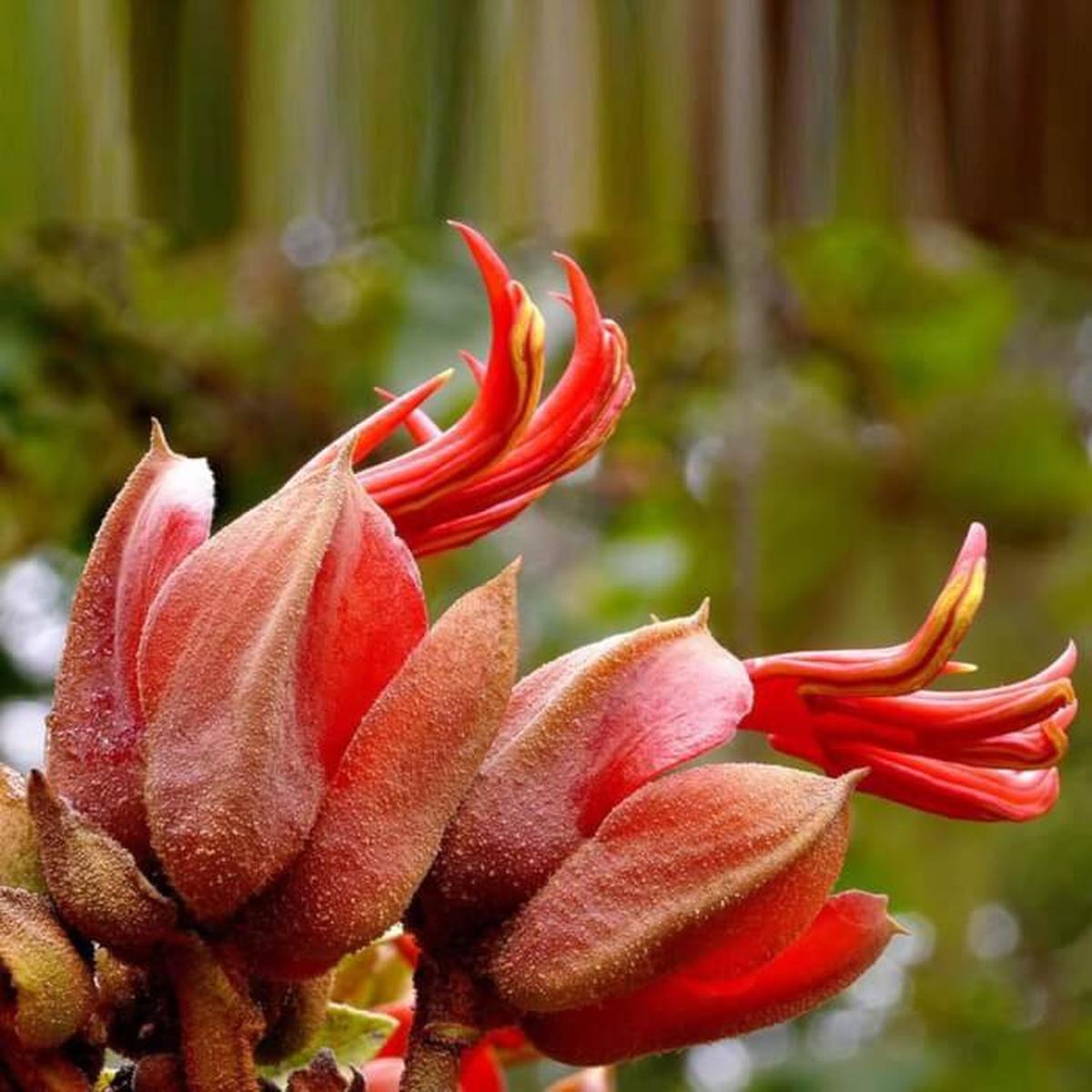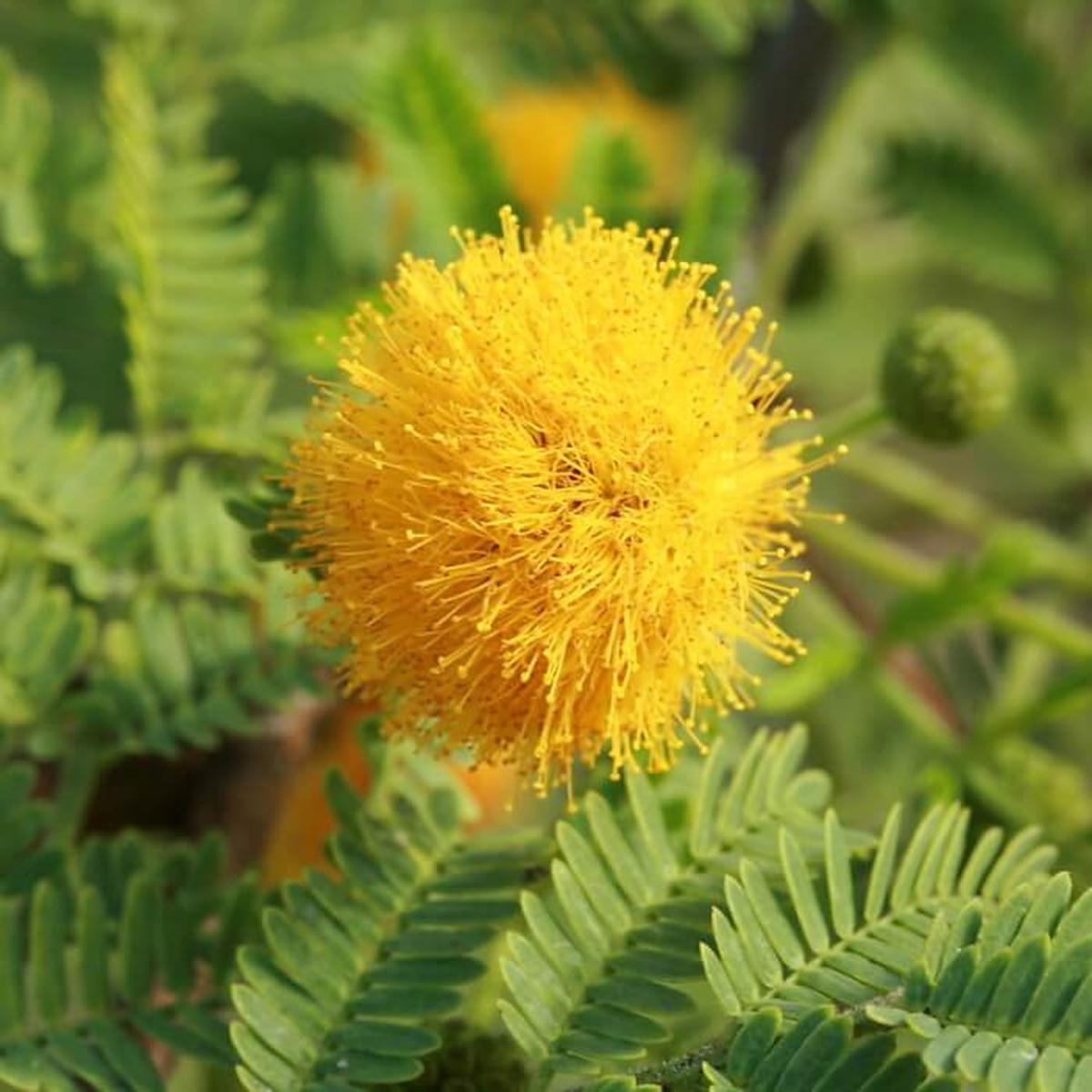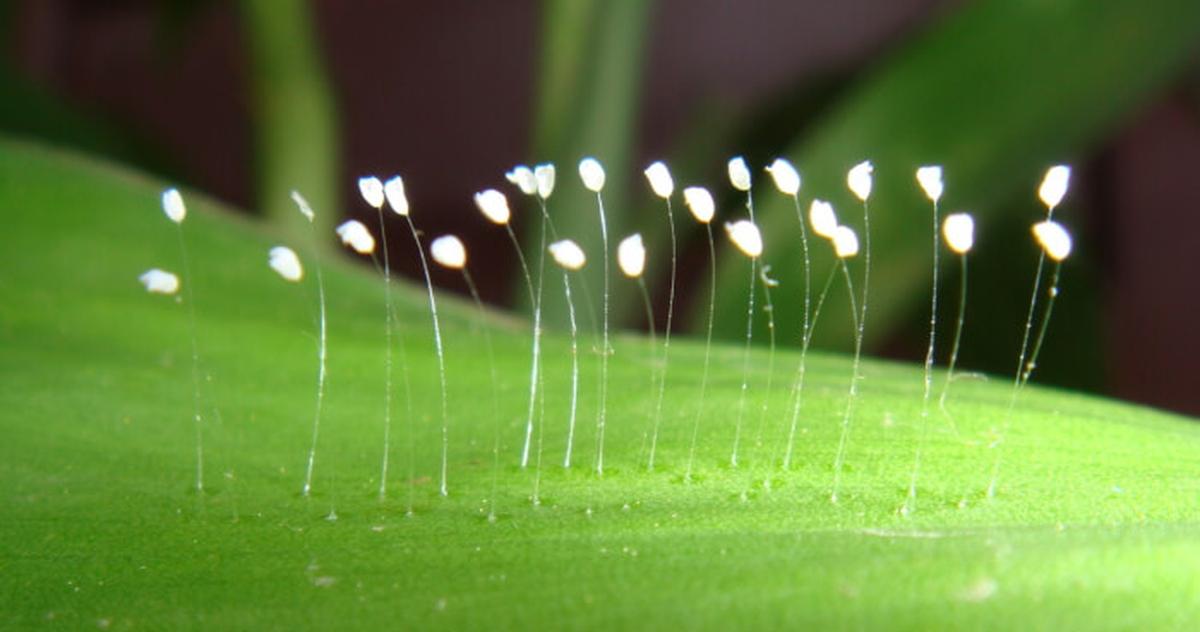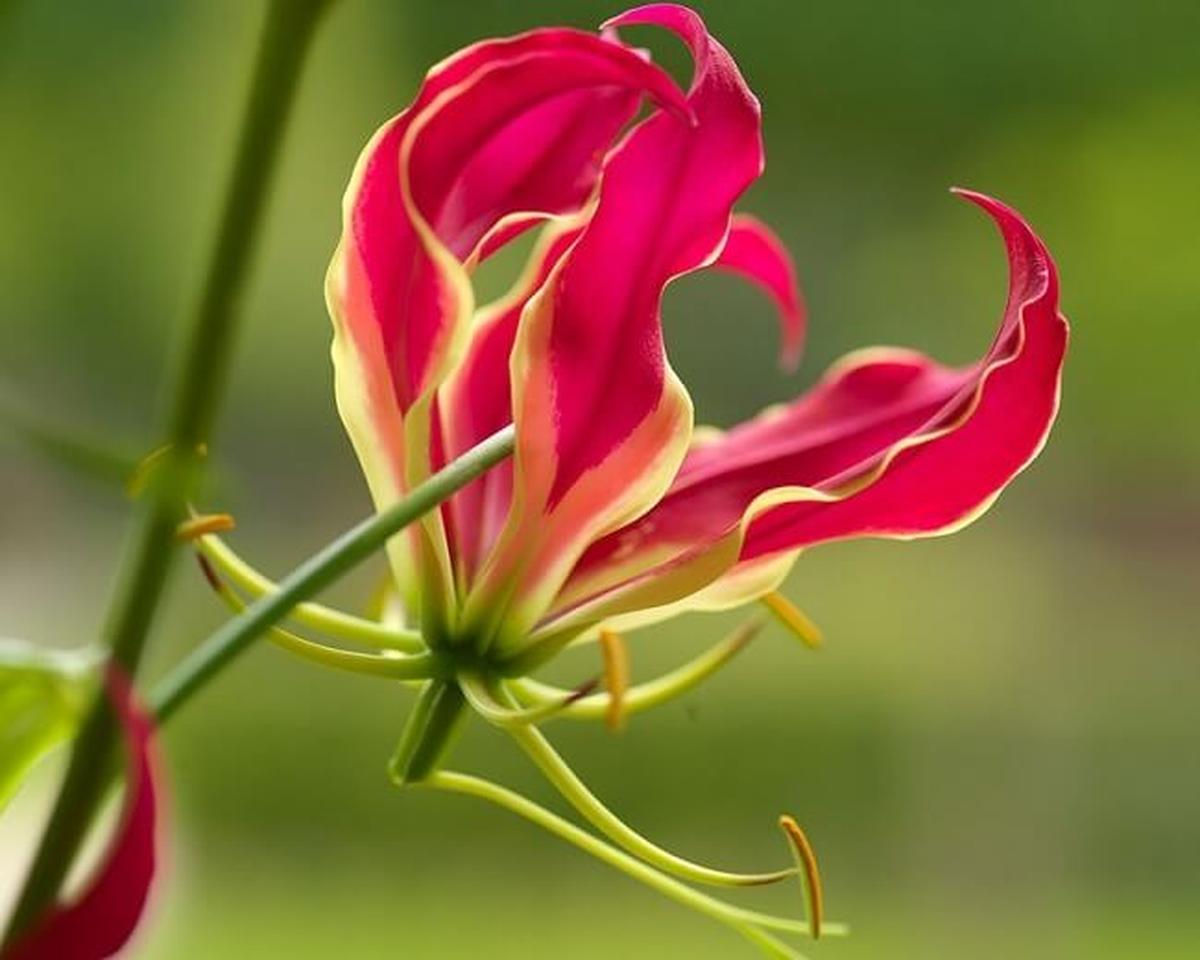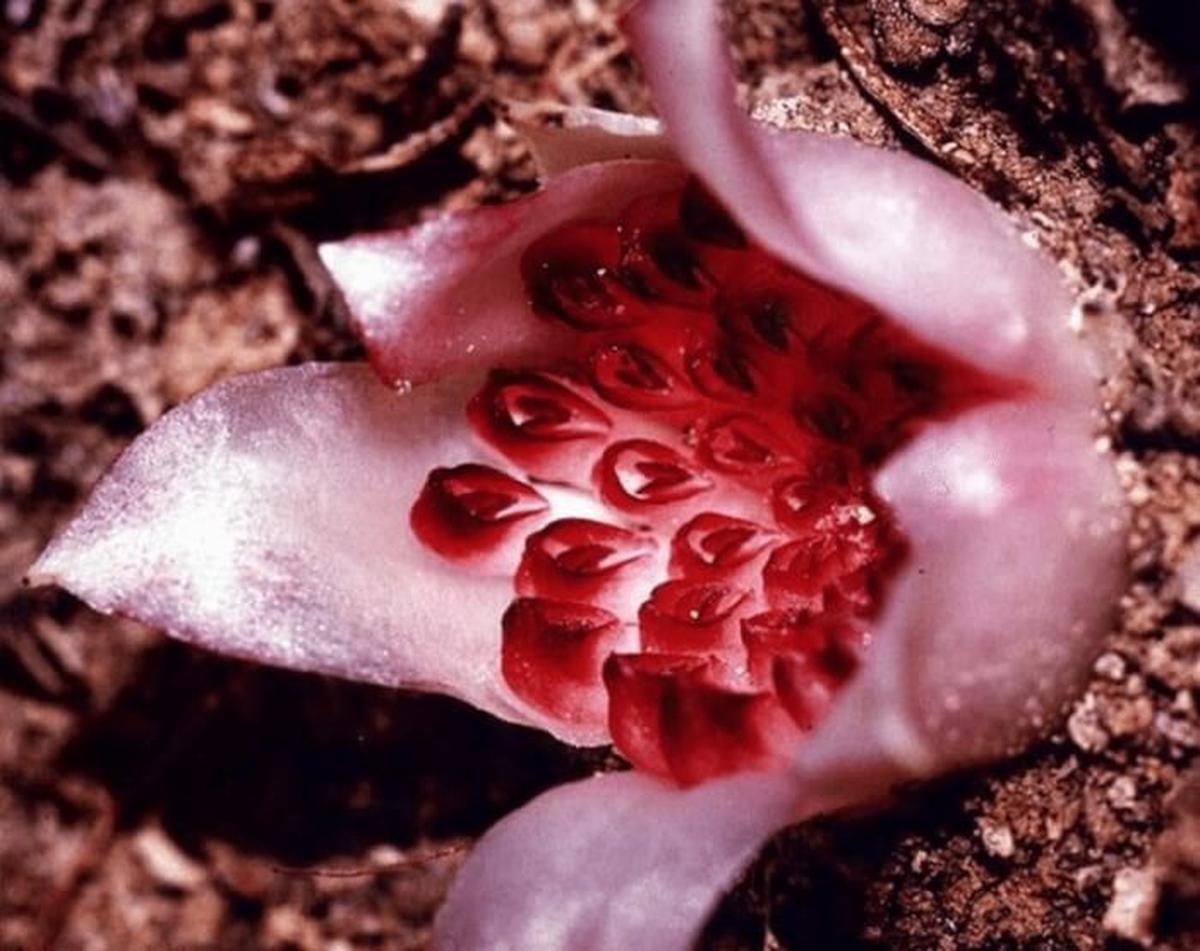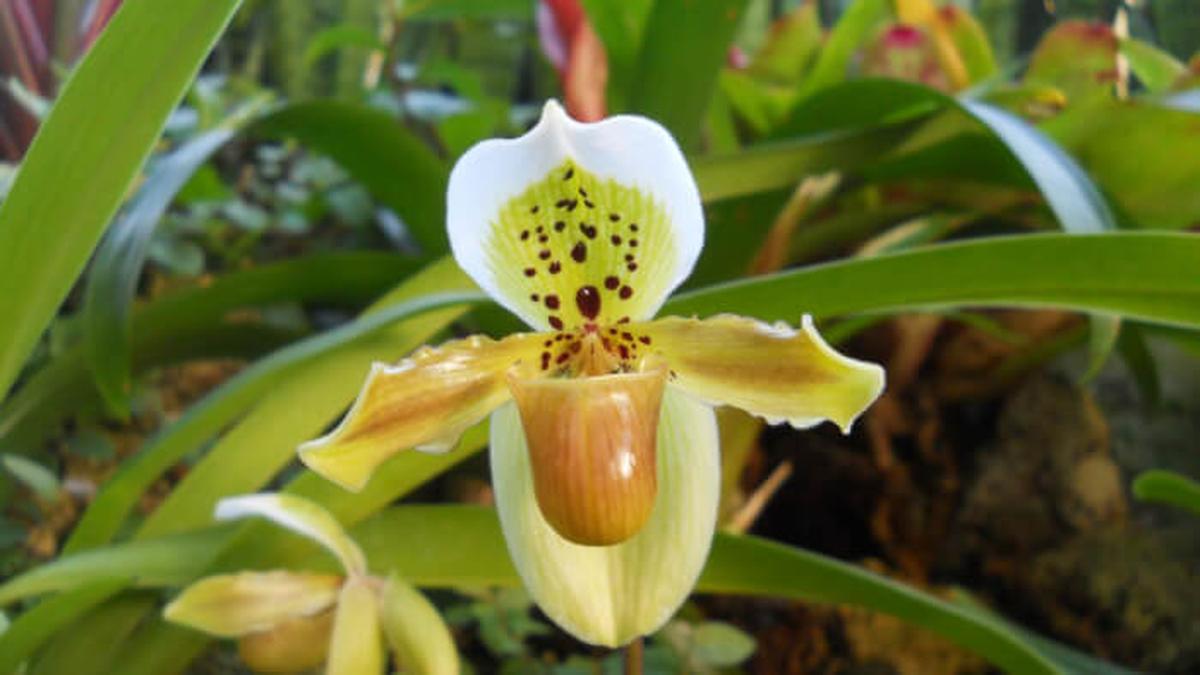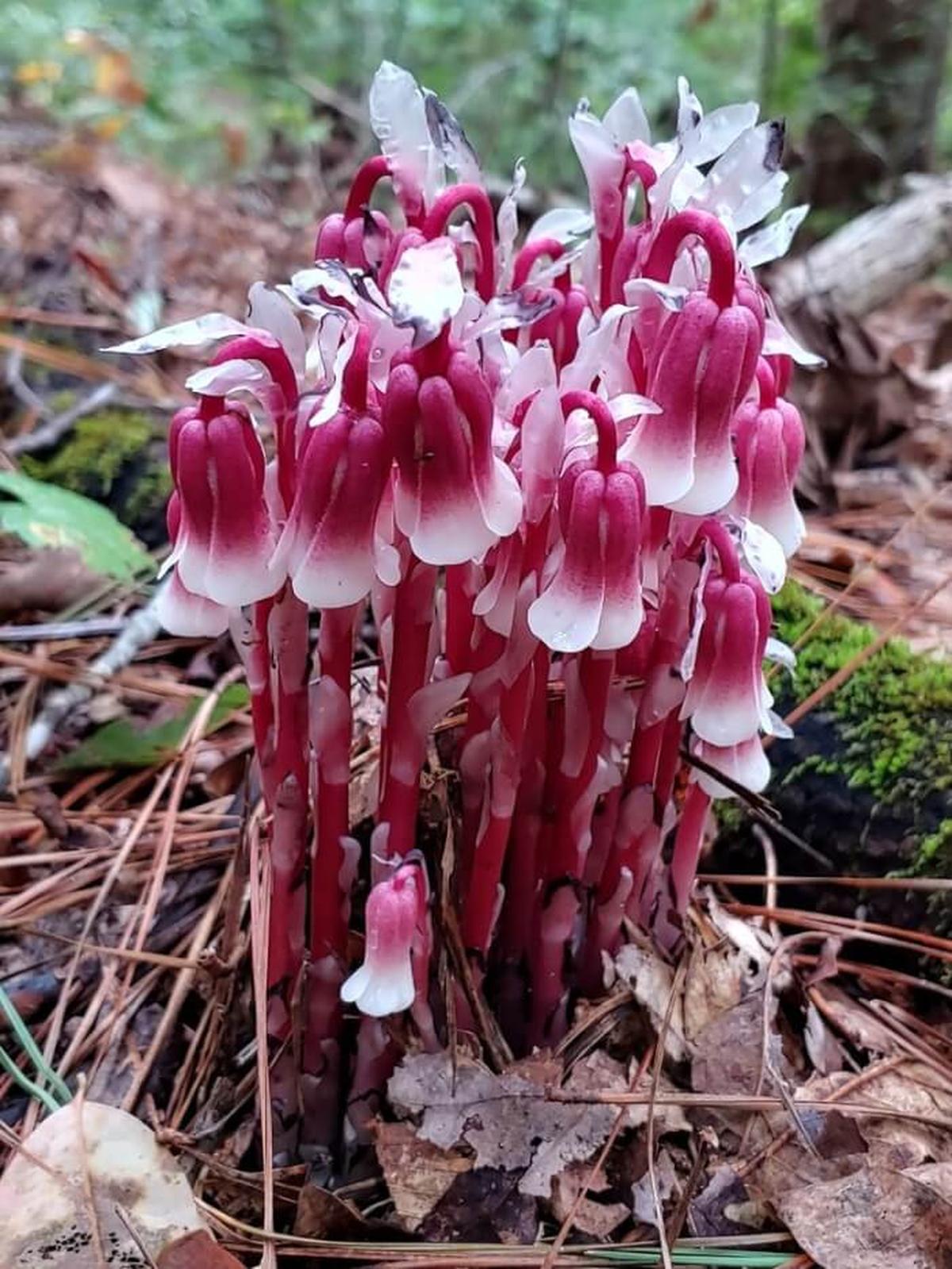12 Spectacular and Uncommon Flowers Worldwide
Exotic and rare flowers showcase the world's incredible biodiversity, each one offering distinctive beauty and elegance. Many of these unique blooms possess striking colors and shapes that captivate any garden enthusiast.
Their rarity makes them highly prized and cherished by collectors and nature lovers. These flowers often come from specific climates, adding a touch of the extraordinary to any landscape.
Known for their delicate features, they inspire wonder and admiration. Take a look at these 12 of the world’s most exotic and rare flowers:
Dancing Girls Flower (Impatiens Bequaertii)
Dancing girls flower, known scientifically as impatiens bequaertii, is a remarkable botanical treasure that stands out for its rarity.
Encountering this exquisite bloom in nature can feel like finding a hidden gem due to its elusive presence.
Its petals possess an intriguing shape reminiscent of graceful dancers, captivating anyone who lays eyes on it.
This enchanting floral specimen not only adds beauty but also sparks curiosity about the wonders of plant diversity in our world.
Ghost Orchid (Dendrophylax Lindenii)
The ghost orchid, known scientifically as dendrophylax lindenii, thrives in a unique climate that is hard to replicate. Its distinct lack of leaves sets it apart from typical orchids, making it an extraordinary sight for enthusiasts.
This captivating plant faces significant threats and is classified as endangered due to its limited growing conditions. Conservation efforts are crucial for preserving this remarkable species and ensuring its survival for future generations.
Observing the ghost orchid in nature can be a rare and unforgettable experience for any plant lover.
Parrots Beak (Lotus Berthelotii)
Parrots beak, scientifically known as lotus berthelotii, captivates with its striking red and orange petals that resemble a bird's beak. Commonly referred to as coral gems or pelican’s beak, this plant has become exceptionally rare.
Due to its dwindling numbers, Spain and the Canary Islands have enacted strict environmental protections aimed at preserving what remains of these remarkable plants. These measures highlight the importance of conservation efforts for unique flora like parrots beak in our ecosystems today.
You can appreciate their beauty while understanding the critical need for preservation initiatives surrounding such extraordinary species.
Cookes Kokio (Kokia Cookei)
Cookes kokio, a member of the Hawaiian hibiscus family, captivates with its striking deep red blooms resembling Cocker Spaniel ears. Ivy-like foliage adds to its unique appeal.
This species features an elegant thin plume at the center of each flower, enhancing its visual charm. Native to Hawaii, it thrives in lush environments and contributes significantly to local biodiversity.
Observing this plant in its natural habitat offers a glimpse into the vibrant flora that characterizes these islands.
Sea Daffodil (Pancratium Maritimum)
The sea daffodil, known scientifically as Pancratium maritimum, thrives exclusively on sandy beaches during the summer months. Its unique habitat contributes to its rarity since it doesn't venture inland.
Resembling the sun with its bright appearance, this flower adds a striking visual element to coastal landscapes. Growing in clusters along shorelines, it provides an enchanting sight against the backdrop of ocean waves and golden sands.
Discovering these blooms can be a delightful experience for beachgoers seeking natural beauty by the water's edge.
Devils Hands Flower (Chiranthodendron pentadactylon)
The devils hands flower, scientifically known as chiranthodendron pentadactylon, originates from Mexico.
This striking plant features petals that resemble a vivid red hand extending from a larger brown-red petal.
Its unique appearance makes it an intriguing addition to gardens and landscapes.
You can appreciate its unusual form while enjoying the beauty of native flora.
Pokemeboy (Vachellia Anegadensis)
The pokemeboy, scientifically known as vachellia anegadensis, is a striking tree native to the British Virgin Islands. Its pinnate leaves create a lush appearance complemented by clusters of vibrant yellow flowers resembling miniature pompoms.
Unfortunately, this unique species faces severe threats due to habitat loss from tourism activities and restricted growing areas. Conservation efforts are crucial for preserving its future in this beautiful region.
Protecting such rare flora not only maintains biodiversity but also enhances the natural beauty of our environments.
Youtan Poluo
Youtan Poluo, also known as Udumbara, is often regarded as the rarest flower in existence due to its astonishing blooming cycle of once every 3000 years.
This minute blossom primarily thrives in regions like China and Taiwan, where it typically attaches itself to palm leaves as a parasitic plant.
Its significance extends beyond mere rarity; ancient Buddhist scriptures attribute profound meanings to this flower, associating it with concepts of immortality.
Discovering such an elusive bloom not only fascinates botanists but also captivates those drawn to its spiritual connotations and extraordinary life cycle.
Fire Lily (Gloriosa Superba)
Fire lily, known scientifically as gloriosa superba, is a striking plant that has gained attention due to its endangered status from excessive harvesting. This stunning flower flourishes in regions such as Asia, Africa, and the Pacific.
Its vibrant blooms come in shades of orange, yellow, and red, evoking the appearance of dancing flames. While beautiful, caution is necessary; contact with its flowers can lead to skin irritation due to their toxic properties.
Preserving this remarkable species ensures future generations can appreciate its breathtaking beauty while staying safe around it.
Western Underground Orchid (Rhizanthella Gardneri)
The western underground orchid, scientifically known as rhizanthella gardneri, is a remarkable plant native to Australia. It possesses a unique appearance resembling an opened pomegranate, intriguing botanists and nature enthusiasts alike.
Thriving entirely beneath the soil's surface, this rare species has adapted to life without sunlight. Its fascinating growth habit makes it a true marvel in the world of flora.
Discovering such unusual plants reminds us of the diversity present in our ecosystems and their hidden wonders waiting to be explored.
Ladys Slipper Orchid (Cypripedioideae)
The ladys slipper orchid belongs to the Cypripedioideae family and is known for its remarkable rarity. Once thought extinct before the 20th century, a surprising yellow variant reemerged in England during the early 2000s.
This stunning flower showcases unique blooms that elegantly extend from a distinctive pouch-like structure. Its extraordinary comeback highlights not just nature's resilience but also our need to protect such rare species.
With its intriguing history, this orchid captivates enthusiasts and conservationists alike who appreciate both beauty and biodiversity.
Red Indian Pipe (Monotropa Uniflora)
The red Indian pipe, scientifically known as monotropa uniflora, presents a fascinating aspect of nature. Unlike typical plants, it thrives without sunlight since it lacks chlorophyll.
This rarity allows it to sprout in various environments and often appears after rainfall. Resembling unusual mushrooms, these intriguing organisms capture attention with their unique appearance.
Their ability to grow under diverse conditions adds an extraordinary element to the forest floor's ecosystem.

